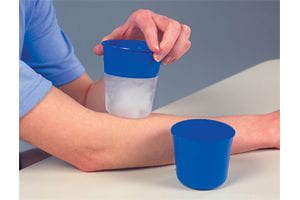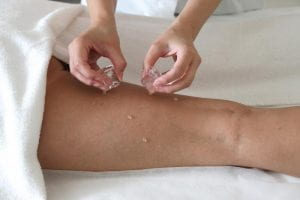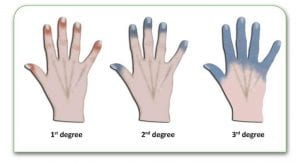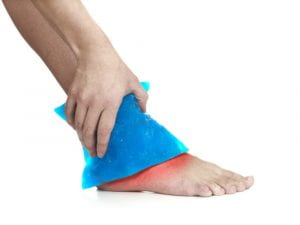Introduction:
Ice therapy is a form of cryotherapy and includes the use of ice cubes or ice packs to help reducing swelling and inflammation helping to numb pain and transfer oxygen to muscle tissues to allow the body to repair damage caused by trauma to the area (Martin Hughes, 2017). This kind of treatment is usually applied within the first 0-72 hours after a musculoskeletal injury has occurred during the acute phase of recovery.

Advantages:
Ice massage is known to help reduce acute or chronic pain, inflammation and swelling of an injured area by reducing the blood flow to the area, numbing the tissues affected and reducing the chances of the muscle going into spasm causing further pain to the area (Terry Zeigler, 2015).
Ice massage is said to relieve pain after training known as delayed onset of muscle soreness (DOMS).
In an experiment based on ice treatment conducted by Isabell, Durrant, Myrer, and Anderson (1992), they highlighted the soreness values of 3 groups of people, those that work using ice those that exercise using ice and a control group of exercising using no ice. Their results showed that the two groups using ice experienced DOMs peak at 24 hours and last for 48 hours however the control group that did not use ice experienced DOMs 96 hours after exercises. This shows that ice triggers the onset of DOMs faster allowing the recovery period to be faster than not using ice.

Disadvantages:
An issue with using ice packs and ice cubes being applied directly to the skin is that if the treatment is not applied correctly, the client can get frostbite to the area being treated. Frostbite is the exposure of skin to below-freezing temperature causing the oxygen and blood flow of the area to be restricted.
When exposing the injured area to the sensation of cold from the ice pack or ice cube it can numb the skin easing the pain and swelling it can also stop blood flow when left on the skin for long periods of time due to vasoconstriction allowing the body to take blood away from areas not being used and carry it to vital organs (Galiuto, 2016).

Conclusion:
Ice is used in the acute phase of injury usually in the first 0-72 hours post-injury or trauma all though having its advantages of reducing pain and swelling, the cold of the ice massage techniques can cause the blood vessels to contract to reduce the blood flow and oxygen to the area being treated. This can lead to serious cold-related conditions such as hypothermia and frostbite when not applied correctly which is not the effect on the body that a rehabilitator you would want to happen to the injury. It is suggested that after the first 72 hours of injury ice massage or any form of cryotherapy is not good for the affected area and instead heat/ thermotherapy should be used. This is because you would try to encourage blood and oxygen flow through the injured area to help in the rehabilitation and recovery of the injury.
